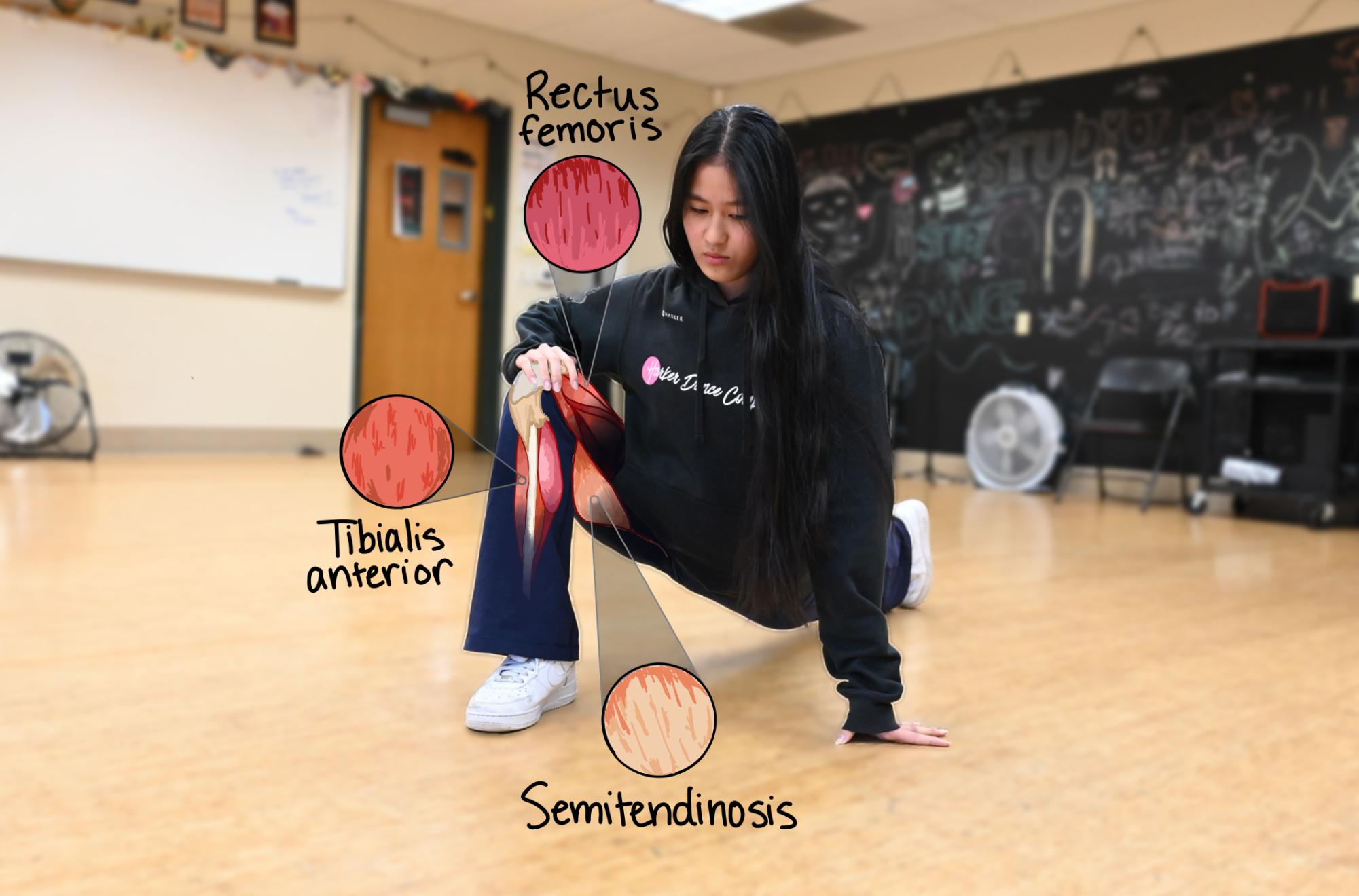After a tough practice, athletes often feel proud, knowing they dominated the intensity of the workout. But by the following practice, muscle soreness and stiffness set in, making it hard to maintain the same level of performance. Harker’s athletics program works to prevent these repercussions by implementing a mix of stretching into the training regimens of each sports team.
“I like to tell people that muscles are like a rubber band that’s dry,” strength and conditioning coach Lauren Brown said. “It’s going to snap if you don’t warm it up before using it. Having that blood flowing gives some extra tension to the muscle so you’re ready to go and exercise.”
According to UNC Health Care, working out itself is not responsible for muscle growth. Instead, muscle fiber forms minuscule tears throughout a training session. Sufficient rest, recovery and nourishment allow the body to regenerate the muscle stronger and bigger than before.
Stretching is essential for preparing the body for a heavy workload. A light warm-up immediately initiates blood flow, increasing the body’s awareness of its movements. As stated by the Risk Management & Insurance of Colorado State University, this blood circulation brings nutrients to the muscles and reduces the incidence of musculoskeletal disorders.
The junior varsity boys soccer team employs frequent stretching and cardio routines to maximize players’ stamina, which is especially vital in a sport where players run more than five miles in one match.
Junior varsity soccer player Luca Barchietto (10) remarked on the effectiveness of these regimens.
“If you’re playing without stretching, you’re going to hurt easier,” Luca said. “That’s why it’s necessary to warm up beforehand. You also see many professional athletes doing it too, so it works.”
In a similar manner, the varsity boys basketball team gears its pre-practice stretches toward the prevention of muscle cramps and hyperextensions that occur after explosive side-to-side and vertical movements.
Varsity basketball player Lucas Huang (9) also takes extra steps to stretch on his own to target specific muscle groups for his position as a shooting guard, which specializes in jump shots.
“I like to get a few arm swings in just to make sure my arms are loose and ready to shoot,” Lucas said. “I also make sure my hips and my knees are warmed up because right now I’m dealing with a little knee pain and hip pain. I’ve go to make sure I don’t injure myself, especially in season.”
Harker’s dance teams also emphasize static exercises after a class or performance. Static stretching holds the same position which primes the muscles for recovery and slows down the heart rate.
Harker Dance Company co-captain Serena Lau (11) suffered a knee injury in her frosh year. Looking back, she wishes she had prioritized stretching and listened to her body.
“It’s very important to make sure you stretch out before you dance,” Serena said. “I’ve seen people who haven’t, and they get injured, and that’s happened to me. Stretching and getting the muscles loosened up is really important for your full body range.”
Many dancers and athletes, like Kinetic Krew co-captain Arthur Wu (12), had to learn the importance of stretching through challenging experiences. They had to fight through abrasions and muscle tears before learning the best practices for taking care of their bodies.
“Although the injuries definitely limited my friends physically in the types of choreography they could perform, many of them grew their mentality instead,” Arthur said. “They turned into stronger people as a whole, and that’s really important. They faced the pain and became aware of how their body really works.”




